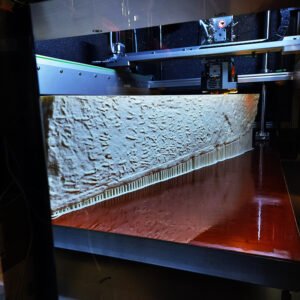The fascination of the Louvre.
The Louvre in Paris is one of the most renowned museums in the world and serves as a showcase for the history and art of different cultures. This article highlights the stele of Tayma, a replica commissioned by the Heimat- und Museumsverein e.V. Freudenstadt. The cooperation between the museum has made a unique cultural journey of discovery possible, which involved numerous technical and organizational challenges.
The unique history of the stele
The stele of Tayma (Taima , Tema) is an outstanding artifact that has found its home in the Louvre. This artifact takes us deep into the history of the ancient city of Tayma, located in the modern-day region of Saudi Arabia. Tayma served as a vital oasis on the trade route that connected major cities such as Medina and Dumah. Its historical significance is also underlined by multiple mentions in the Old Testament (Hi 6:19 ; Isa 21:14 ; Jer 25:23 ). The date of the stele itself is estimated to be between the 4th and 5th century BC.
An Aramaic text is engraved on the stele, which tells of the introduction of the worship of a Babylonian god in Arabia. The lower part of the stele depicts a priest standing in prayer with his arms raised. In addition, the upper register shows the image of the god surrounded by a winged disc.
Julius Eutlingen and Freudenstadt
Julius Eutlingen, a renowned orientalist and the discoverer of the stele, was deeply connected to his homeland, the Black Forest, throughout his life. Eutlingen’s family roots extend to Freudenstadt, the birthplace of his mother. This personal relationship with Freudenstadt and the Black Forest had a lasting influence on his scientific research and his dedication to history.
The museum writes the following about the process of creating the stele:
In November 2017, the idea of a 3D replica to be exhibited in the museum in Freudenstadt was born. Thanks to the support of the twin town of Courbevoie, which is 8 km from Paris, the first contacts were made between the town of Freudenstadt and the Musée du Louvre in Paris. It took almost five years to finalize the agreements with the Louvre and complete the printing of the replica, which took over ten days (without interruption). On July 11, 2022, the birthday of Julius Euting, the replica was presented in Freudenstadt.
The replica is exhibited with the kind permission of the Musée du Louvre (Paris).
Technology for the preservation of art
The use of modern technologies, in particular 3D printing, played a crucial role in the production of the replica of the Tayma stele. By using precise scanning techniques, every detail and subtlety of the original stele could be authentically reproduced. Modern scanning technologies and imaging techniques revealed details that are difficult to see with the naked eye on the original.
For the printing process itself, it quickly became clear that the bigRep Studio g2 printer was capable of producing the stele in a single pass. To make the most of the available build space, the stele had to be aligned diagonally in the print space. This arrangement required extensive support structures to ensure stability
during the printing process and to ensure the integrity of the replica.
In addition to the technical challenge, numerous organizational and legal aspects had to be clarified, which made it necessary to read through and sign many documents.
documents. However, once all aspects of the project had been discussed, we were able to start work. After just under 10 days of printing, we had achieved our goal.
Looking back
Although the project took place two years ago, our team at EWOQE looks back on this time with pleasure. Working with renowned public institutions such as the Louvre and the city of Freudenstadt was a real privilege for us.




